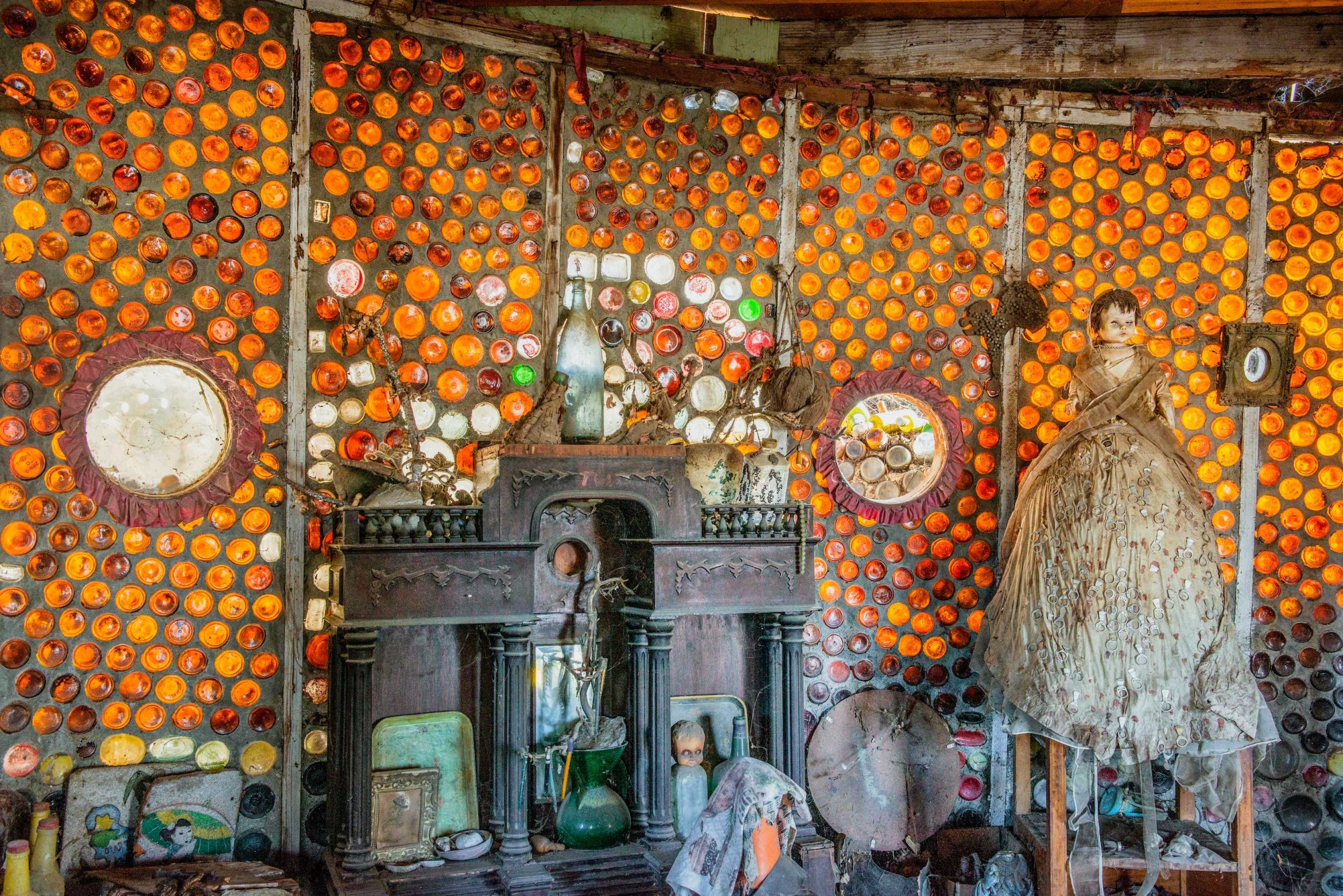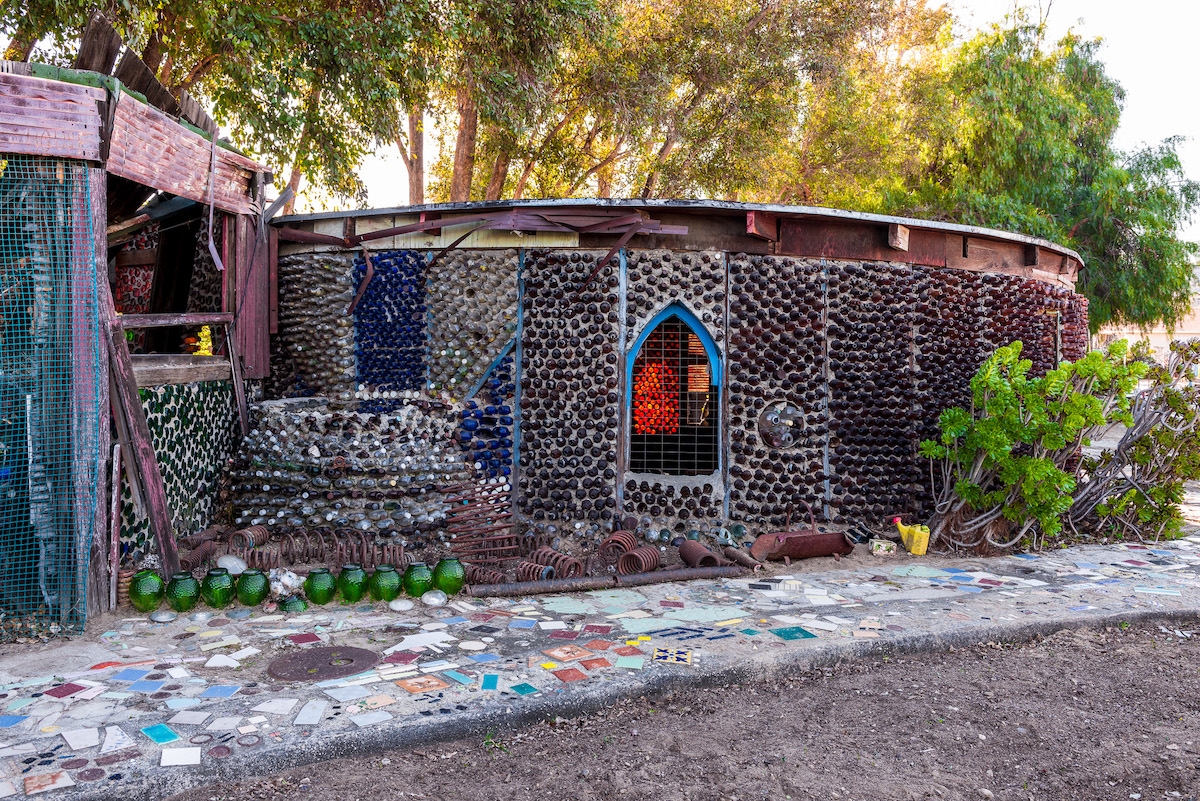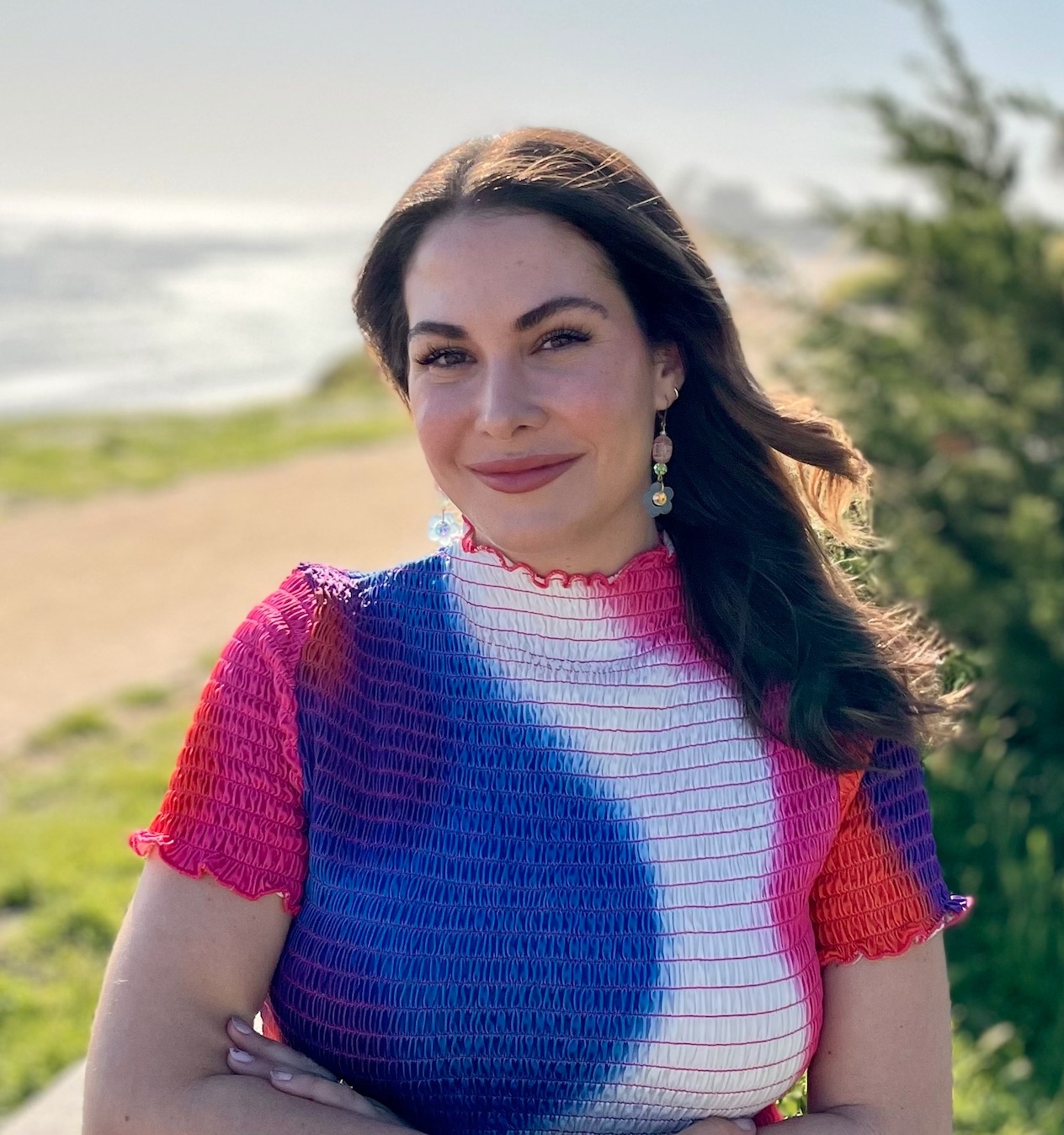
For years travelers have visited a peculiar roadside attraction just off California State Route 118 in Simi Valley called Grandma Prisbrey’s Bottle Village, a patchwork of oddly shaped dwellings made of salvaged materials like brightly colored bottles. But the property is more than just the amusing and eccentric home of an inventive person.
“Bottle Village can be examined as the confluence of midcentury roadside advertising, Southern California tourism and placemaking strategies of second-wave feminism,” said Elizabeth Driscoll Smith, a doctoral candidate in UC Santa Barbara’s art history program. To examine how self-taught artists such as Prisbrey — who took inspiration from nearby theme parks Knotts Berry Farm and Disneyland — responded to the expanding infrastructure of the last century, her dissertation project was recently awarded a Luce/American Council of Learned Societies Dissertation Fellowship in American Art.
Her research explores how increased accessibility to travel, including mass transportation and waterway expansion projects, altered how folk or self-taught artists saw themselves and their communities in the mid to late 1900s. Driscoll Smith also looks at folk artists within the context of a burgeoning folk art tourism.
“Elizabeth is the fourth Luce/ACLS Pre-Doctoral Fellow I have had from History of Art & Architecture over a period of five short years: these are national-level, extremely competitive fellowships,” said Jenni Sorkin, art history professor and Driscoll Smith's dissertation advisor. “She is part of a generation of emerging scholars that I am training here at UCSB to rethink the way we frame and tell the story of American art: enlarging representation by bringing a wider and more diverse lens to a field that has an historic East Coast and painterly bias.”

“My dissertation project marshals many forms of evidence to counter decades of collector-driven literature,” she said, “that has historically separated work by folk or self-taught artists like Prisbrey from the context of their built environments.” By consulting photographs and videos taken by the artists’ friends, community members and what artists themselves wrote about their work, Driscoll Smith seeks to add nuance to the descriptor “self-taught,” which she finds conveniently imprecise.
“In the case of Prisbrey, for example, she was a parts assembler for Boeing during World War II, which likely contributed to her interest in building,” Driscoll Smith said. Another artist she’s looking at, Sam Doyle, a Black folk artist from South Carolina, developed his artistic skills at the Penn School, the first educational center in the American South for formerly enslaved African Americans.
“Conventionally art and artists classified in these terms have been treated as isolated, with little impact beyond the regional, traditional practices of their localities,” said Laurie Monahan, History of Art & Architecture chair. “We congratulate Elizabeth on her efforts to counters those perceptions by critically examining and documenting the ways in which these artists engaged and strategically grappled with increased accessibility and modernization as manifested by the expansion of national infrastructure and tourist networks. Her project will have a real impact on the ways in which these artists and their works are understood and considered as a vital part of 20th century American culture and art."
Currently a predoctoral fellow at the Smithsonian American Art Museum in Washington, D.C., Driscoll Smith’s research goes on to question why artists like Prisbrey or Doyle are even considered self-taught when they have some formal and informal training and education.
“They have so much knowledge and experience and yet we still call them self-taught,” she said. “I want to offer some insight into how we can think about forms of knowledge and pedagogy differently.”
Originally form Kentucky, Driscoll Smith said she turned her focus to self-taught artists after working as a research assistant at the Speed Art Museum in Louisville, where she had a supporting hand in the exhibition, “Southern Accent: Seeking the American South in Contemporary Art.”
“Within their work I saw so much of what I saw at home growing up in rural Kentucky,” she said. “I saw myself in their work; I saw my community.”

Elizabeth Driscoll Smith
Elizabeth D. Smith is a Ph.D. Candidate in the History of Art & Architecture Department at the University of California Santa Barbara, specializing in American art and material culture of the twentieth century. Her dissertation project, “Build/Live/Work: Artist-Built Environments and the Expanded Vernacular in the Twentieth Century," is supported by a 2022–2023 Predoctoral Fellowship at the Smithsonian American Art Museum and a 2023–2024 Luce/ACLS Dissertation Fellowship in American Art.
Debra Herrick
Associate Editorial Director
(805) 893-5446
debraherrick@ucsb.edu



